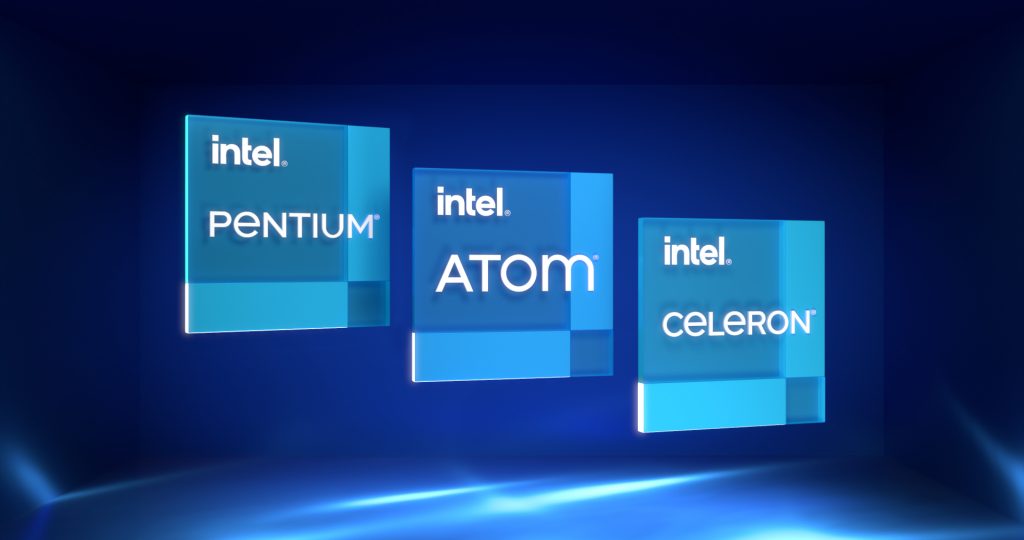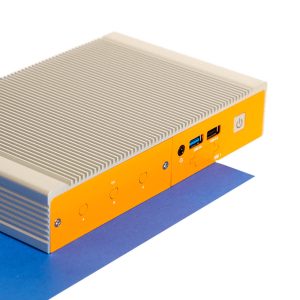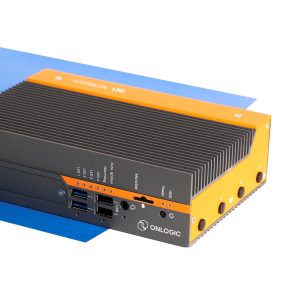What is the Elkhart Lake Intel processor line and why is it important to the IoT?
Residents of Elkhart Lake, Wisconsin, have been confused with many articles mentioning their town (see our Instagram account for evidence). In addition to asking why there’s suddenly so much interest in their quiet little town, they’re also wondering, “What does Elkhart Lake have to do with the IoT?”
Intel® uses code names when talking about products and technologies that are in development before they’re commercially available. They’ve put Elkhart Lake on the map. Not the tourist town with a population of less than 1,000, but the code name for their newest processor generation that they designed specifically for Internet of Things (IoT) applications. Check out our Tech Edge video on the subject, or read on to learn more.
Why the Elkhart Lake Code Name?
Intel used the code name “Elkhart Lake” to describe their newest line of Intel Atom® x6000E Series, and Intel® Pentium® and Celeron® N and J Series processors before they were released. Now that they are commercially available, we’re in that period of time where we – along with customers and the press – still often refer to them by their code name. For one thing, the proper name takes up A LOT of characters on social media! It will take time for the code name to fade into the recesses of our collective memories, as it does with each new Intel processor generation. For now, it’s the easiest way to describe the processor generation that’s powering our new systems.

Intel Atom x6000E series and Intel Pentium and Celeron N series and J series bring new artificial intelligence, security, functional safety and real-time capabilities to edge customers. They were introduced in September 2020. (Credit: Intel Corporation)
Elkhart Lake Intel Processors Join the OnLogic Line Up
The Helix 310, Helix 330, Karbon 410 and Karbon 430 incorporate Intel Atom, Celeron, and Pentium CPUs from the generation formerly known as Elkhart Lake. These 4 new systems join OnLogic’s line of highly customizable, passively cooled devices for use in Industry 4.0 applications.
“Helix 300 and Karbon 400 have been engineered to take advantage of the new features built into the latest generation of Intel processors to enhance IoT functionality. From machine learning and artificial intelligence, to advanced SCADA or networking, the combination of Intel technology and the plethora of configuration possibilities we’ve built into these systems means users can tailor a platform to their exact needs. The specialized solutions our clients will build with these news platforms promise to change the way goods are made, data is acted upon, and business is done in virtually every industry.”
~Michael Kleiner, OnLogic VP of Engineering
Each of the four devices can be paired with OnLogic’s suite of OEM services, including custom branding, software imaging, custom fulfillment services, and lifecycle management support.
Helix 300 Series Details
The Helix 300 Series joins our fanless industrial line and is built for the challenges of the IoT edge. With support for triple independent 4K displays, a 0°C to 50°C operating temperature range, and a wealth of configuration options, the Helix 310 and Helix 330 were engineered with versatility in mind. Features and specifications include:
- Dual-Core Celeron N6211 or Quad-Core Pentium J6425 CPU
- 3 USB 3.2 & 3 USB 2.0 ports
- 2 COM
- 3 DisplayPort
- 1 Gb LAN port (2 Gb LAN available with Pentium CPU)
- 12-24 V power input
- Up to 32 GB memory
- Optional features:
- DIO
- 2 additional COM
- CAN Bus
- 3 additional antennas
The Helix 330 model comes equipped with 2 additional Gb LAN ports standard.
Karbon 400 Series Details
The Karbon 400 Series joins our rugged line and builds on the capabilities of the Helix 300 but with additional environmental protections. The two new rugged models, the Karbon 410 and Karbon 430 can be configured with either the Dual-Core Intel Atom X6211E or Quad-Core Atom X6425E CPU. Built-in modularity allows users to choose the connectivity and capabilities needed for their application. With an operating temperature range of -40° to 70°C, fanless cooling, and variable power input, the Karbon 400 Series has been engineered to thrive in even the most challenging environments. Features and specifications include:
- Dual-Core Atom x6211E or Quad-Core Atom x6425E CPU
- 2 USB 3.2 & 2 USB 2.0 ports
- 2 LAN with optional PoE
- DisplayPort
- SIM Slot
- Optional 4G LTE
- 9-48 V power input
- Up to 32 GB memory
- Optional features:
- 2 COM
- 2 additional LAN
- GPIO
The Karbon 430 model features two additional M.2 2280 slots, which can be used to equip additional storage, wireless connectivity, or I/O. The Karbon 430 also offers an additional SIM card slot, enabling multi-carrier cellular connectivity configuration.
Not only do these new processors offer new levels of compute and graphics performance, but they also offer a fresh CPU lifecycle. Ready to learn more about Elkhart Lake Intel processors? Visit our Elkhart Lake product page, and if you have an upcoming project and are looking for a powerful solution with a long lifecycle, contact an OnLogic Solution Specialist who can help you find the best system for your needs.
We originally posted this blog on January 28, 2021. We updated this blog on May 17, 2022.
Get the Latest Tech Updates
Subscribe to our newsletters to get updates from OnLogic delivered straight to your inbox. News and insights from our team of experts are just a click away. Hit the button to head to our subscription page.
Share
More Articles
OnLogic Industrial Computers
Discover OnLogic's multitude of industrial computers that will help you to advance your IoT project
Learn more at OnLogic.com
OnLogic Industrial PCs: Designed to last. Built to order. Delivered in days. Visit our online store at OnLogic.com







